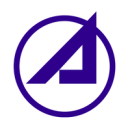
When engineering organizations adopt DevOps practices, they typically consider two options: an all-in-one DevOps toolchain or a customizable DevOps toolchain.
While it ultimately depends on the needs of the team, most orgs go with a customized and integrated solution in order to improve processes and work most efficiently. Los Angeles-based aerospace research and development center The Aerospace Corporation falls into that category.
Below, Senior Analytics Software Engineer Adaeze Esiobu gave us a glimpse into how, using an open-source automation server, her team is able to quickly develop new pipelines from existing ones — and where it’s taken them.
“Our solution has evolved from DevOps to DevSecOps driven by customer demand,” Esiobu said.
What does your team’s DevOps toolchain currently look like?
We use an open-source automation server as the tool of choice for the DevOps solution we’re currently running. We use the tool’s shared library functionality to quickly develop new pipelines, encouraging them to inherit from a master pipeline with a few customizations. This allows teams to participate in continuous integration and continuous delivery without becoming experts. The ability to customize our solution with plugins was a deciding factor when choosing this tool as a solution. Another factor was the ability to deploy it in a different platform we use to manage containerized workloads and services with a master node and as-needed nodes in order to meet tenant pipeline demands. This configuration ensures an autoscaling solution.
We use a code quality inspection tool for static code analysis for pipelines. We use tools that read our environment configurations such as GitOps for continuous delivery, Nexus for binary repository and Harbor for Docker repository.
Our solution has evolved from DevOps to DevSecOps driven by customer demand.”
What were some of the key considerations when evaluating and choosing the tools your team would use?
An analysis of alternatives was performed for most tools used in the current DevOps solution. A few items that were taken into consideration include the following: security and cyber implications of the tools, upgraded processes, cost, ability to run tools on an enterprise scale, ease of use and market adoption.
How has your DevOps toolchain evolved over time?
The first few iterations of our DevOps toolchain involved an open-source automation server at the center. Over time, we have moved our solution to a cloud native installation, allowing us to take advantage of capabilities such as autoscaling to meet demand. We’ve incorporated static code analysis, unit testing, integration testing, UI testing, enforced code reviews and container security standards. Our solution has evolved from DevOps to DevSecOps driven by customer demand.






